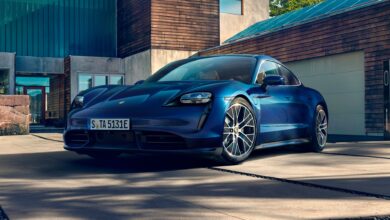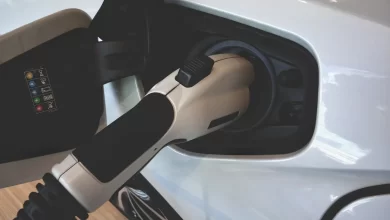EVs Are Just The Wrong Tool For Serious Towing In 2024
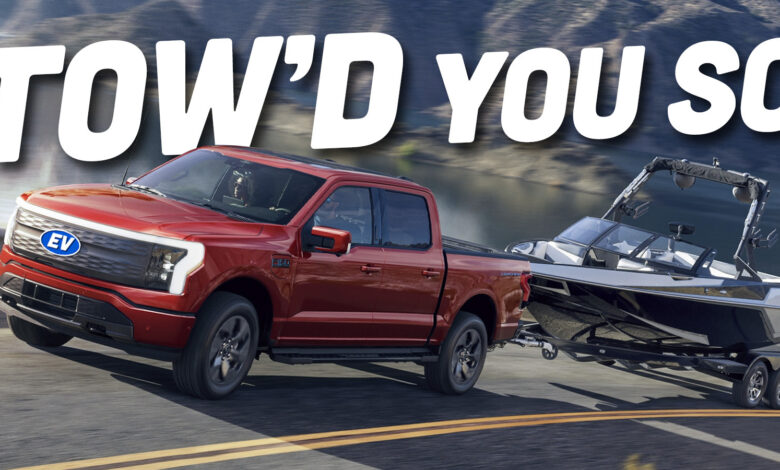
Gasoline cars are the wrong tools for city driving. I live in a big city, and when I step out of my BMW i3 and into my girlfriend’s Lexus RX350,I always think:”This is a good car, but it’s clearly the worse for this task.” Traffic hits me with the double-whammy of both wasting my time and wasting my fuel, whereas when the 405 turns into a total parking lot with me behind the wheel of my i3, I can at least take solace in the fact that my vehicle is in one of its most efficient driving conditions. The RX350 needs regular brake jobs because it doesn’t turn slowing-down into reusable energy. Not to mention, I have to fill up the Lexus at gas stations instead of just plugging in in my garage. But just as EVs are well suited to certain tasks like city driving, internal combustion engine-powered cars are also well suited for certain tasks, towing being chief among them. In 2024, EVs are just not the right tool for long-range towing, and this recent TFL Truck YouTube video makes that very clear.
It’s a tricky thing talking about EVs in 2024. Few topics are more polarizing; you’ve got EV skeptics on one side saying the government is shoving electric cars down our throats despite EVs being worse for the environment than gas cars (an erroneous claim), and you’ve got Elon Musk worshippers on the other saying EVs are a panacea for all human suffering. I was recently on Fox News talking about how hybrids are the most palatable vehicles for the most people in the U.S. today, and that they thus represent a great way to reduce carbon emissions, and of course I got flak from both sides. One side called me a weenie for liking hybrids, the other side said idiotic things like “hybrids are the worst of both worlds.” But being a car journalist means keeping it real, and all these years in the Lion’s den at Jalopnik mean my skin is thicker than a Cybertruck body panel. So I’ll keep it real when it comes to long-range towing: This just isn’t the right job for an EV.
![]()
This might seem like a painfully obvious “take” to many, but to plenty of folks, the idea of an EV not being the very best at all tasks is a hard pill to swallow. But this is just how it is in 2024, and the TFL Truck video above — which shows both a Tesla Cybertruck and a Ram 2500 Cummins Diesel towing ATC 28-foot toy haulers weighing roughly 8,000 pounds each — makes that painfully obvious.
It’s not really about the driving dynamics. In theory, an EV makes for a great tow vehicle; they’re well-ballasted and planted (i.e. they’re heavy as hell), they offer prodigious torque, their regen tech offers relief for their friction braking system, there’s no transmission to overheat, and on and on. No, the problem really just comes down to energy density.
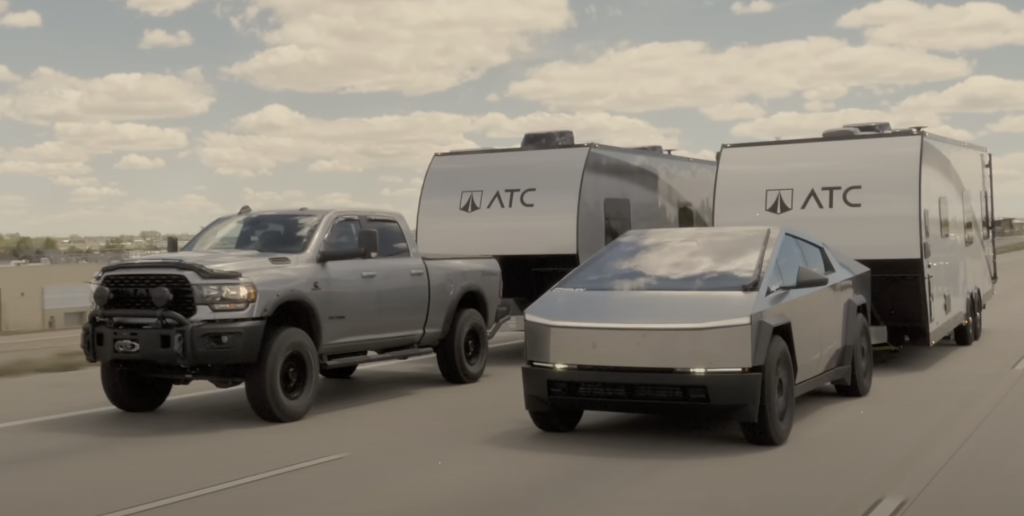
I’ve talked about the concept of “Vehicle Demand Energy” before, but I feel like now that EVs are really making inroads into the mainstream, the concept becomes more important than ever. VDE represents the amount of energy needed to propel a vehicle down a road in a given driving condition/drive cycle.
The reason why daily-driving EV pickup trucks works is that around-town/highway driving doesn’t require a ton of energy, relatively speaking. If you want to daily-drive your Tesla Cybertruck or Ford F-150 Lightning or Rivian R1T, you’ll probably get close to your EPA-rated range (over 200 miles), and that’s probably enough. You’re propelling the vehicle plus maybe a passenger or two down the street, going up against bearing friction, gravity, rolling resistance, and — the biggest factor on the freeway — drag. 122kWh of battery capacity is totally enough when VDE is low.
But when you’re towing, especially up a grade, VDE jumps up massively; this is why Davis Dam is typically the “sizing” condition for vehicle cooling systems. You need a lot of power to pull thousands of pounds up a 5.7-percent grade. This is irrespective of whether your vehicle is an EV or if it’s gas-powered (OK, an EV require less cooling drag, reducing VDE, but that’s not a dominant factor that sets VDE).
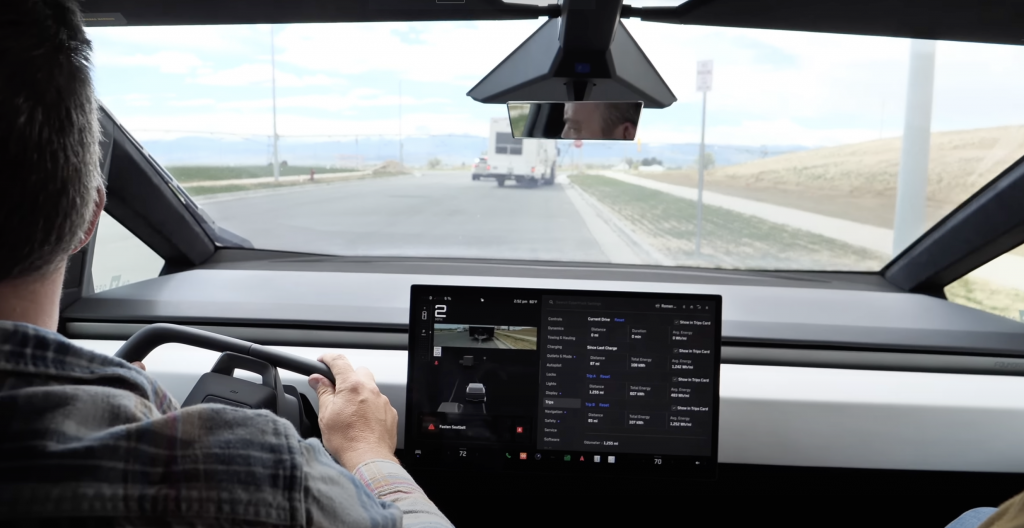
If you need a ton of power to get up a long grade, you need a ton of energy onboard, and sadly, EVs just don’t have that. A diesel truck like the Ram 2500 in the video above can handle long-duration, high VDE demands by carrying 30-ish gallons of diesel onboard. A single gallon of diesel is equivalent to 37.1 kW-hrs of energy, so the Ram has over 1,100 kWh of energy to pull from. Meanwhile, a Tesla Cybertruck has just 122.4 kWh onboard — that’s equivalent to just 3.3 gallons of diesel. Granted, the Cybertruck is much more efficient than the diesel Ram, but it’s not 10 times more efficient. Which is why its range is so terrible when towing a heavy load.
TFL managed to tow its heavy trailer 85 miles, with about 10 miles left on the battery, for a total of about 95 miles of range. That’s not good. As TFL notes, to tow the 1,000 miles from Colorado to LA, they’d have to recharge 11 times, and since it takes about 40 minutes to recharge the battery, they’d have to spend over seven hours charging. The diesel truck needed 8.73 gallons to travel 85 miles, so its range given its tank capacity of probably 31 gallons (there’s an optional larger tank) is about 300 miles. So if they were to do the same trip to California, they’d have to fill up four times; at a total of about 5 minutes each, that’s 20 minutes to refill the Ram versus seven hours to recharge the Cybertruck. And that doesn’t even factor in route changes in order to get to Tesla Superchargers. Yikes!
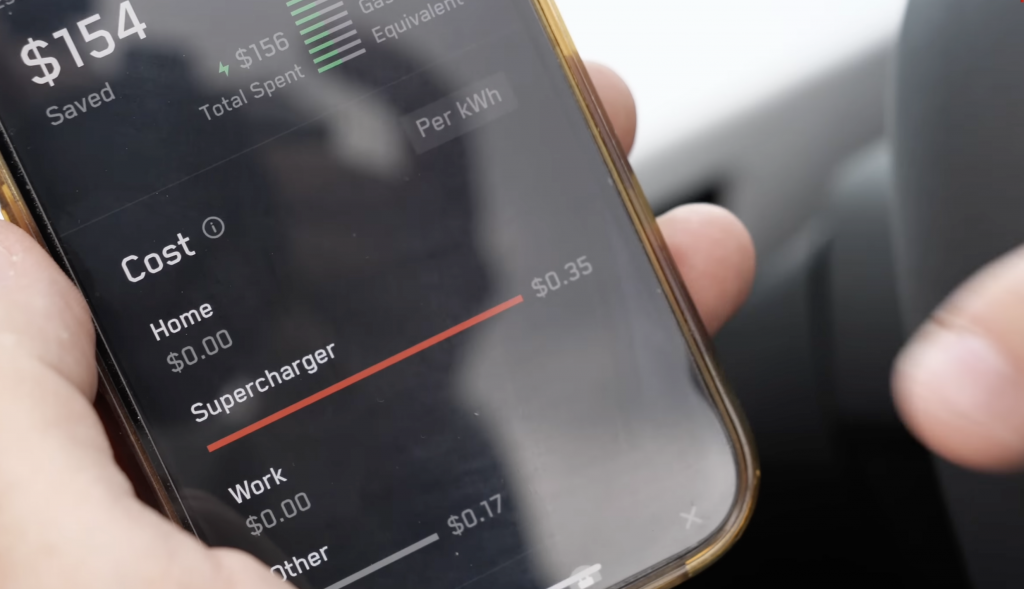

Then there’s the issue of charging, which — as I mentioned before — you’ll be doing 11 times trying to drive 1,000 miles. “You could take up 1, 2, 3, 4, 5, 6, 7, 8 Supercharger stalls,” Roman says in the video above. Why? Because many Supercharger locations don’t have pull-through chargers, meaning you have to back the truck up close to the Charger, which you cannot do with a trailer hooked on. TFL, as shown above, had to unhook the trailer just to charge the truck.
“I wouldn’t recommend towing something this large a long distance,” says Andre in the clip. “It’s all about the right tool for the right job; this is just not the right tool,” chimes in Roman. “I had another 250 miles range according to the [Ram]…right tool for the right job,” continues Roman.
The two did mention a similar test they did in an F-150 Lightning; Tommy from TFL managed a range of just 86 miles, with 9% battery remaining. Tommy estimates the truck would have done 95 miles before the battery was completed depleted:
Roman and Andrew also mention a Silverado EV test they did. They managed to tow a smaller trailer over 230 miles on a single charge:
How did the Silverado EV pull this off? By just having more energy onboard. Over 205 kWh. Unfortunately, with an EV, if you want more energy onboard, it’s a lot more complicated than slapping in a larger blow-molded fuel tank and filling it with more fuel — you have to install more heavy, expensive, dirty-to-mine batteries.
As batteries become cheaper and more energy dense, EVs will begin to make more sense as serious tow rigs, especially as charging infrastructure improves to include more pull-through chargers that don’t require disconnecting the trailer. Whether they’ll be cheaper is not yet clear; the Silverado not only has a big, expensive battery onboard, but filling up that battery would have cost $98 to fill (about the same as a gas truck towing the same distance) if TFL had used the 48 cents-per-kWh Electrify America charging station, per the video above. Yikes.
Still, it’s worth noting that EVs are cheaper to maintain that ICE-powered trucks, and what’s more, even the giant battery-having trucks (which require more resources to be built) will be better for the environment in the long run from an overall emissions standpoint.
For now, though, EVs trucks are 1. too expensive. 2. require far-too-frequent charging. 3. cost too much to recharge 4. require unhooking the trailer. And I could go on and on with drawbacks; I do think that EVs as serious tow-rigs (and not just casual around-town trucks — a role that they’re proficient at, as mentioned in the clip above) will eventually make sense. But that time is not now.
For daily-driving though, where VDE is low, they’re great. I drive my BMW i3 on electric-mode everyday, and for commuting duties, I’ll never go back to ICE.
Images: TFL Truck

